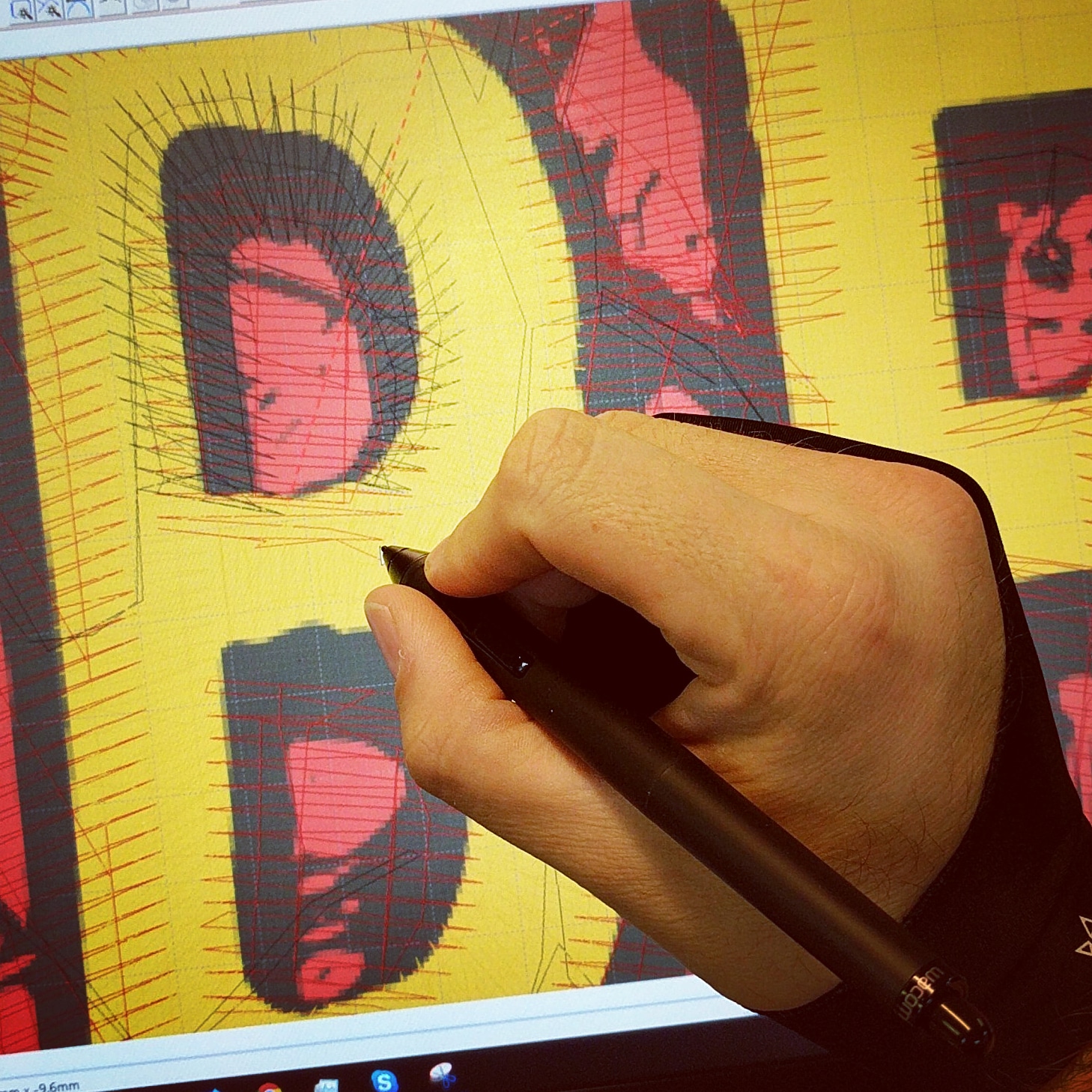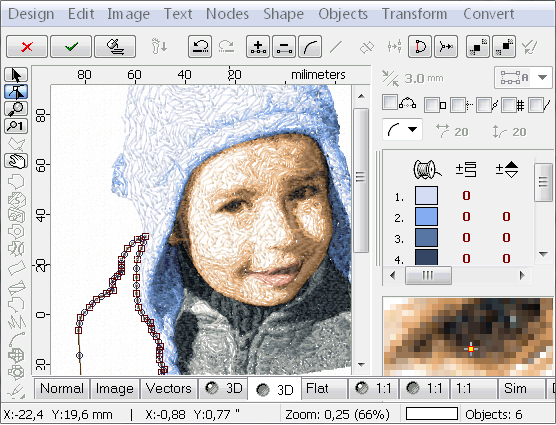Grasping the Needlework Digitizing Refine: Your Ultimate Overview
Embroidery digitizing is a thorough craft that needs precision and experience to equate intricate styles right into electronic layouts for maker embroidery. As artisans embark on this journey to grasp the needlework digitizing procedure, a comprehensive understanding of the essentials establishes the structure for quality.

Understanding Embroidery Digitizing Basics
Needlework digitizing fundamentals develop the foundation upon which elaborate styles are equated into machine-readable styles for specific stitching. This preliminary action in the embroidery digitizing procedure is essential for making certain that the final stitched product is a devoted depiction of the initial style. Recognizing needlework digitizing fundamentals entails comprehending crucial ideas such as stitch kinds, stitch instructions, thickness, padding, and draw settlement.
Sew kinds play a crucial function in identifying the visual and textural outcome of the stitched layout. By picking the ideal stitch type, whether it be satin, fill, or running stitch, digitizers can achieve the preferred result and enhance the general top quality of the embroidery. Additionally, stitch instructions influences the circulation and measurement of the style, while thickness establishes the spacing and coverage of the stitches.
Furthermore, padding sewing gives security to the style by protecting the material and avoiding distortion during the embroidery process. Draw settlement is another essential consideration to combat the natural tendency of material to agreement when sewn. Mastering these needlework digitizing essentials is essential for producing professional-quality embroidered items.
Choosing the Right Digitizing Software
Choosing the ideal digitizing software is an important choice that substantially influences the effectiveness and high quality of the embroidery digitizing procedure. Digitizing for Embroidery. When picking the right digitizing software program, it is important to take into consideration variables such as the intricacy of styles you prepare to create, the user-friendliness of the software application, the degree of consumer support supplied, and the compatibility with your embroidery machine
There are different digitizing software options offered in the marketplace, ranging from basic programs for beginners to sophisticated software program for professional digitizers. Some prominent options consist of Wilcom EmbroideryStudio, Hatch Needlework Software, and PulseID. These software program packages offer a wide variety of devices and features to aid you create intricate designs why not try here effortlessly.
Prior to deciding, it is recommended to check out the various software application options via complimentary trials or trials to determine which one ideal fits your demands. Additionally, reading evaluations and seeking recommendations from seasoned digitizers can give beneficial understandings into the strengths and weak points of each software program bundle (Digitizing for Embroidery). By carefully evaluating your needs and comparing the attributes of various digitizing software application, you can make an informed selection that boosts your embroidery digitizing workflow
Digitizing Tools and Methods

Optimizing Style Settings for Needlework
Grasping the intricacies of style settings is basic in achieving optimum lead to the needlework digitizing process, structure upon the structure laid by understanding digitizing tools and techniques. When enhancing style settings for embroidery, it is crucial to consider variables such as stitch kind, density, padding, draw settlement, and registration. Stitch type selection impacts the total feel and look of the layout, with options like satin, fill, and running stitches providing different textures and effects. Density describes the spacing and thickness of stitches, affecting the design's protection and durability. Appropriate rug sewing supplies stability and avoids textile distortion, specifically for complex designs or on stretchy materials. Draw payment readjusts for textile stretch throughout sewing, ensuring exact design replication. Registration settings straighten various aspects of the design precisely, preserving overall layout honesty. By fine-tuning these design settings, embroiderers can enhance the quality and precision of their stitched creations.

Troubleshooting Common Digitizing Issues
When coming across usual digitizing issues throughout the embroidery procedure, it is crucial to comprehend the source and carry out efficient solutions without delay. One common issue is stitch thickness concerns, where stitches may be also thick, creating the material to tighten, or as well sporadic, causing gaps in the design. Changing the stitch thickness settings in the digitizing software program can help resolve this concern.
An additional frequent difficulty is string breaks during the embroidery process. This can happen due to various reasons such as inaccurate stress settings, boring needles, or using low-quality thread. Making sure proper maintenance of the embroidery device, including normal needle adjustments and stress changes, can lessen the event of thread breaks.
Moreover, style enrollment mistakes can lead to misaligned aspects within the embroidery layout. Inspecting the style alignment in the digitizing software and making needed adjustments prior to Resources sewing can aid in preventing this concern. By dealing with these common digitizing issues quickly and efficiently, you can make certain a smoother embroidery procedure and top quality ended up products.
Verdict
Finally, grasping the needlework digitizing process calls for a solid understanding of the essentials, the best selection of software application, and expertise of tools and strategies. Maximizing design setups and troubleshooting typical digitizing concerns are essential actions in making certain high-grade needlework outcomes. By following these steps vigilantly, one can attain precision and efficiency in the digitizing procedure.